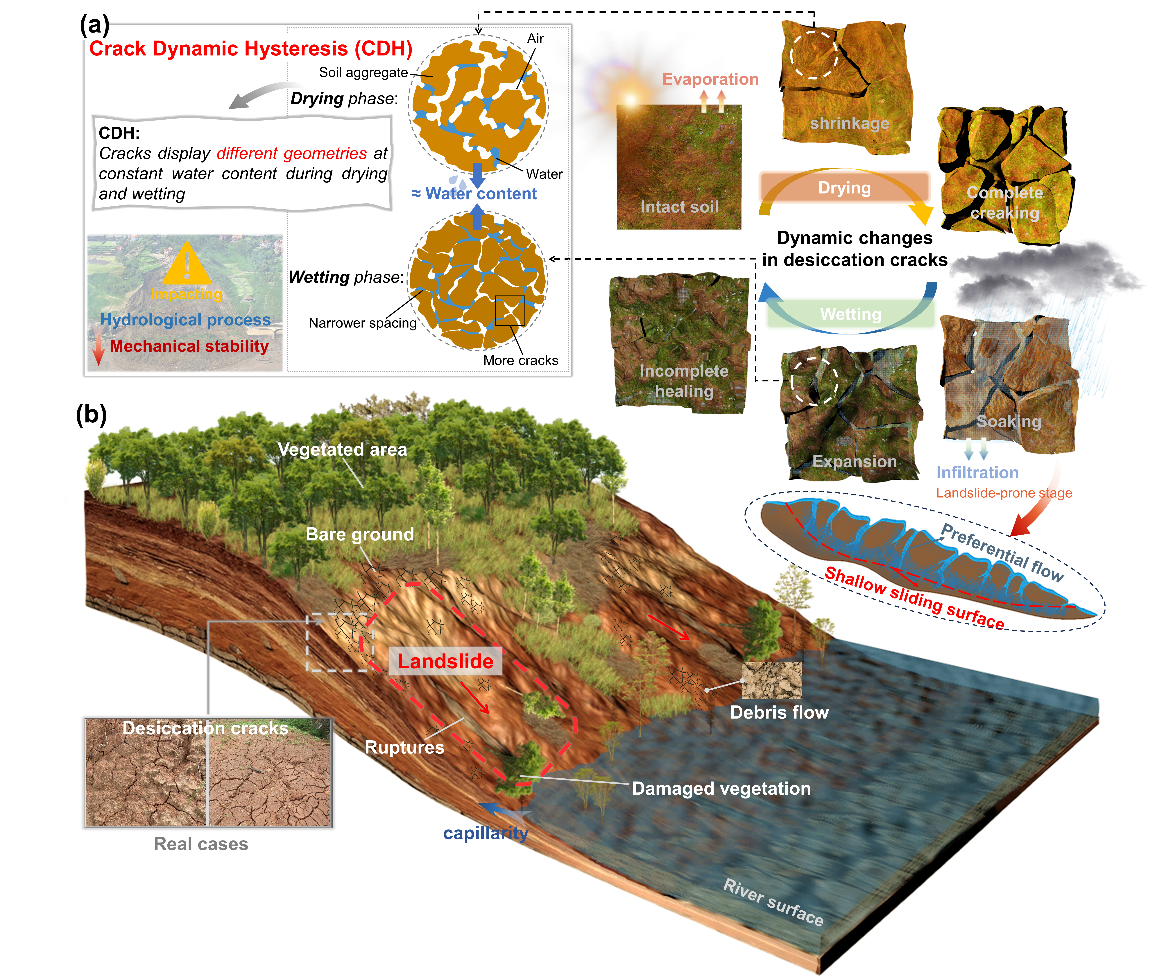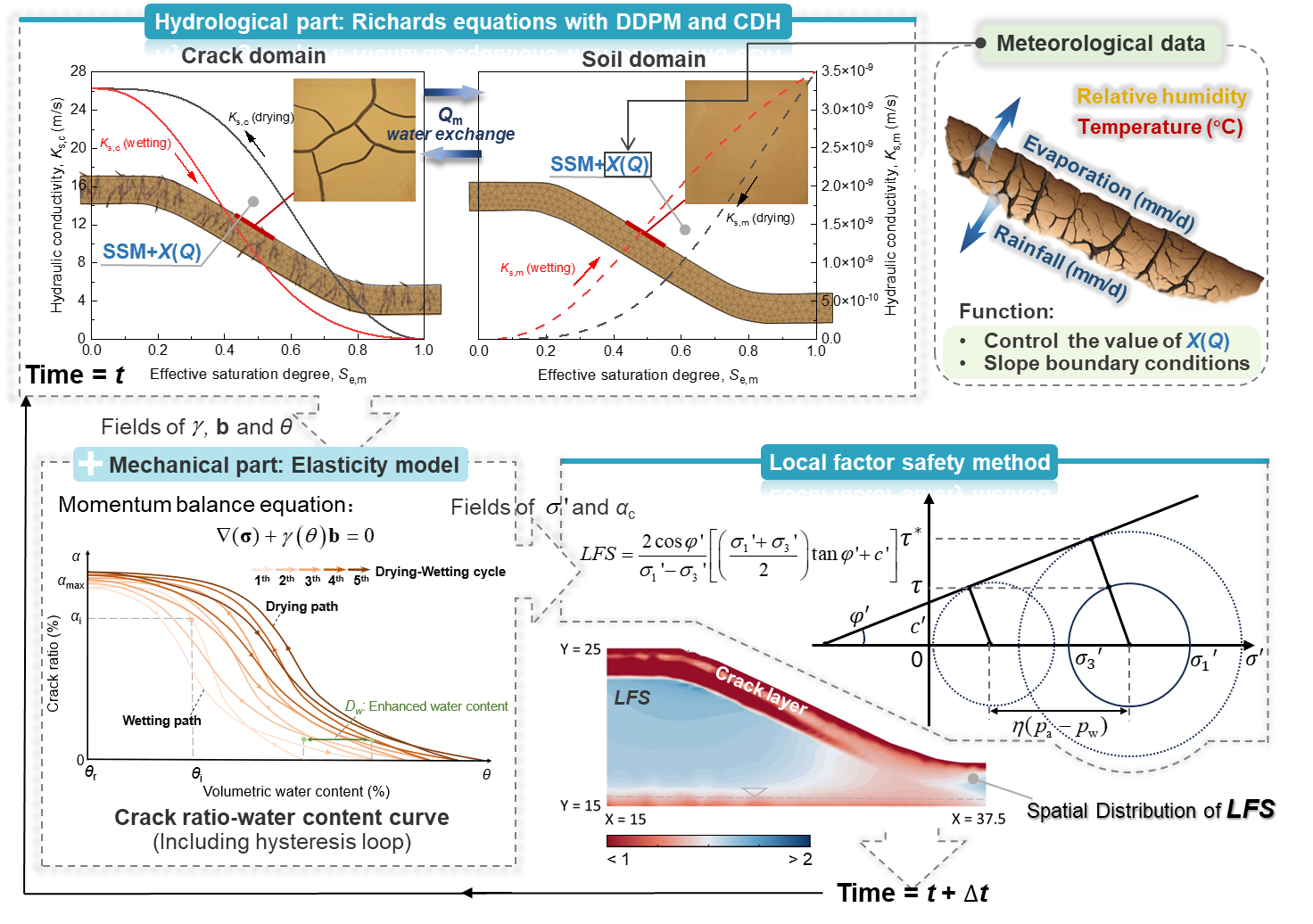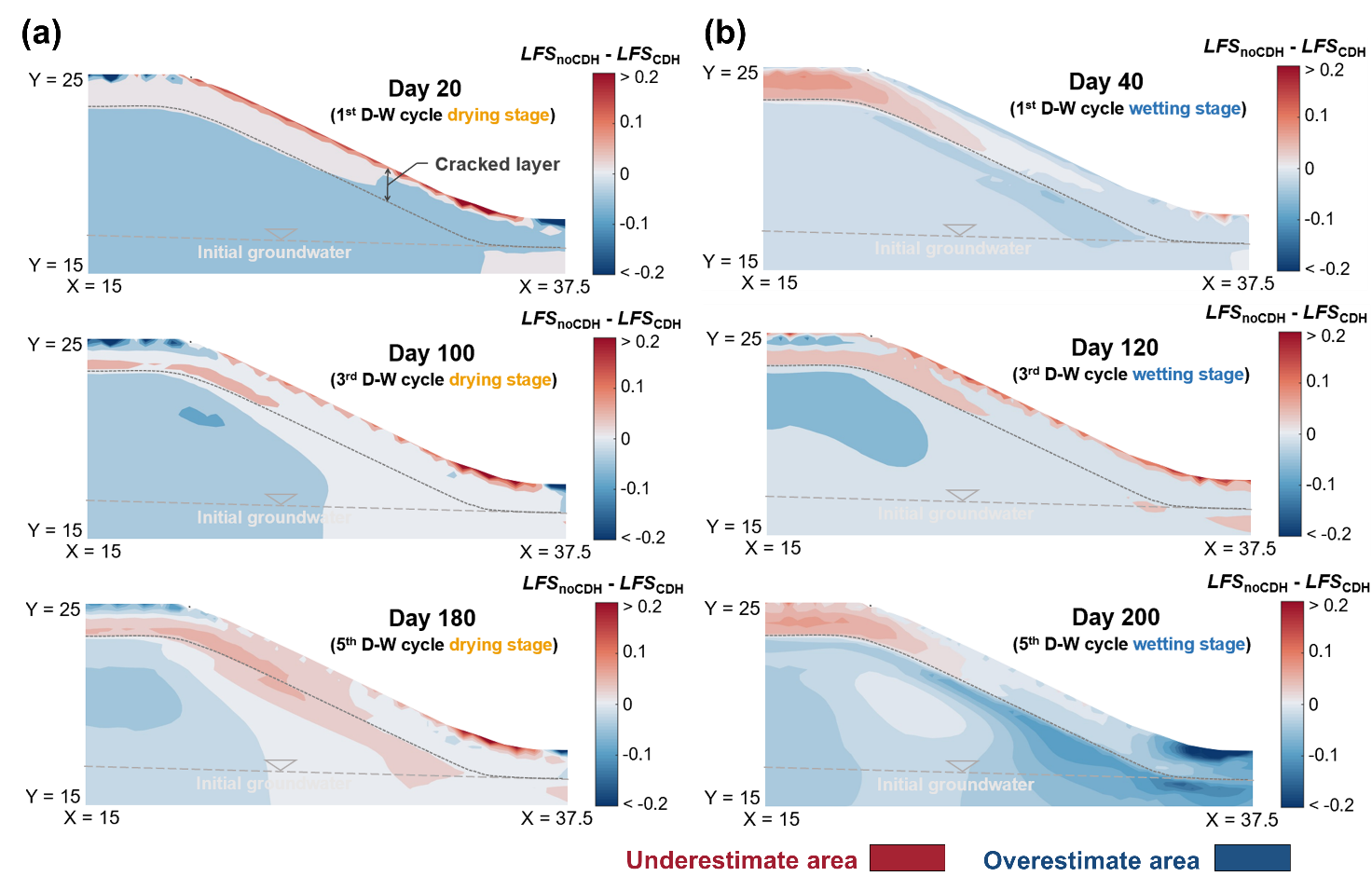Soil cracking is a common natural phenomenon driven by climatic processes. The presence of cracks can severely degrade the engineering properties of soils, resulting in various geohazards and environmental issues. Under natural climatic influences, soils typically undergo sequential stages of drying, shrinkage, wetting, and swelling, causing desiccation cracks to cyclically open and close. However, previous studies often neglected the open-close behavior of cracks.
Based on extensive laboratory experiments, the research team led by Professor Chao-Sheng Tang has precisely captured the subtle variations in crack geometry during drying and wetting paths, revealing that crack opening and closure is not a simple reversible process but exhibits complex Crack Dynamic Hysteresis (CDH) characteristics. Specifically, under the same water content, significant differences were observed in crack geometry parameters (e.g., aperture and depth) between the drying and wetting phases. Building upon these findings, the team developed a dynamic dual-permeability model that incorporates hysteresis effects by introducing a crack dynamic function, enabling the formulation of a slope stability analysis model that considers the coupled effects of climate and crack evolution (Figure 2). In the mechanical field calculations, an improved elastic model was employed to evaluate stress distribution within the slope. Using a local factor of safety approach, this model can assess spatial variations in stability, quantitatively evaluating how dynamic crack evolution influences overall slope stability and revealing the nonlinear coupling between crack development and moisture redistribution. The results show that hysteresis effects cause highly stochastic spatial distributions of crack ratio. Seasonal intense rainfall acts as a “catalyst,” further intensifying the complexity of crack evolution. Neglecting hysteresis effects in slope stability assessments can result in underestimating slope safety during drying phases and overestimating it during wetting phases. Furthermore, such deviations increase with the number of drying-wetting cycles (Figure 3). These findings provide critical scientific support for understanding the failure mechanisms of cracked slopes and lay an important theoretical foundation for disaster prevention and mitigation in cracked soils under extreme climatic conditions.
The research, titled “Exploring the Hysteresis Effects of Climate-Induced Desiccation Cracks on Slope Stability: New Insights From Experimental and Numerical Studies”, was recently published in the internationally renowned journal Journal of Geophysical Research: Earth Surface. Xiaoying Chen, a master's student at Nanjing University, is the first author, and Professor Chao-Sheng Tang is the corresponding author. This study was jointly funded by the National Natural Science Foundation of China, the National Key Research and Development Program, the Jiangsu Natural Science Foundation, and the Yangtze River Delta Science and Technology Innovation Community Key Project.
Citation: Chen, X.-Y., Tang, C.-S., Luo, Y., Vahedifard, F., Tian, B.-G., Wang, T., et al. (2025). Exploring the hysteresis effects of climate-induced desiccation cracks on slope stability: New insights from experimental and numerical studies. Journal of Geophysical Research: Earth Surface, 130, e2024JF008085. https://doi.org/10.1029/2024JF008085

Figure 1. CDH and its impact on the slope. (a) CDH concept. (b) Dynamic crack behavior and its effect on slope stability.

Figure 2. CDH of COMSOL and MATLAB modeling overview.

Figure 3. Difference of LFS with CDH () and without (). (a) During drying stages. (b) During wetting stages. (X Y unit: m)

